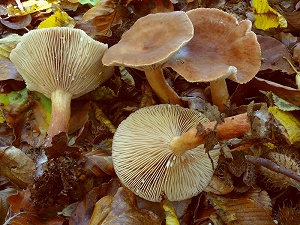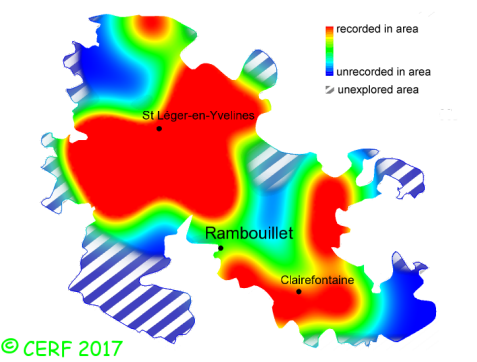| Lactarius lacunarum Hora |
|
|
|
|
|
|
The cap is yellow-brown to brick-reddish brown, depressed, often with a small central umbo. The cap surface is smooth, not viscid nor sticky. The stem is orange cream towards top, more reddish towards base. The flesh is cream to yellowish (when drying), turning yellow after a few minutes when exposed to air; its taste is mild then slightly hot; the odour is faint, fruity; its texture is grainy (breaking like a chalk stick), exuding when cut a white milk, turning yellow on the handkerchief. The gills are cream then pale beige, adnate, crowded (nb of gills per 90° ~ 25 ). The spore print is white. This species is mycorrhizal. It grows on the ground, in the forests, on wet grounds often flooded, around ponds, with poplar, alder, willow, birch. The fruiting period takes place from July to November.
Distinctive features : reddish-brown cap; stem redder towards base; white milk, turning slowly yellow when exposed to air; small size; faint odour; in very wet areas or dried ponds Lactarius lacunarum is occasional and widely present in the forest of Rambouillet, and is occasional, more generally speaking . | ||
|
page updated on 14/01/18

